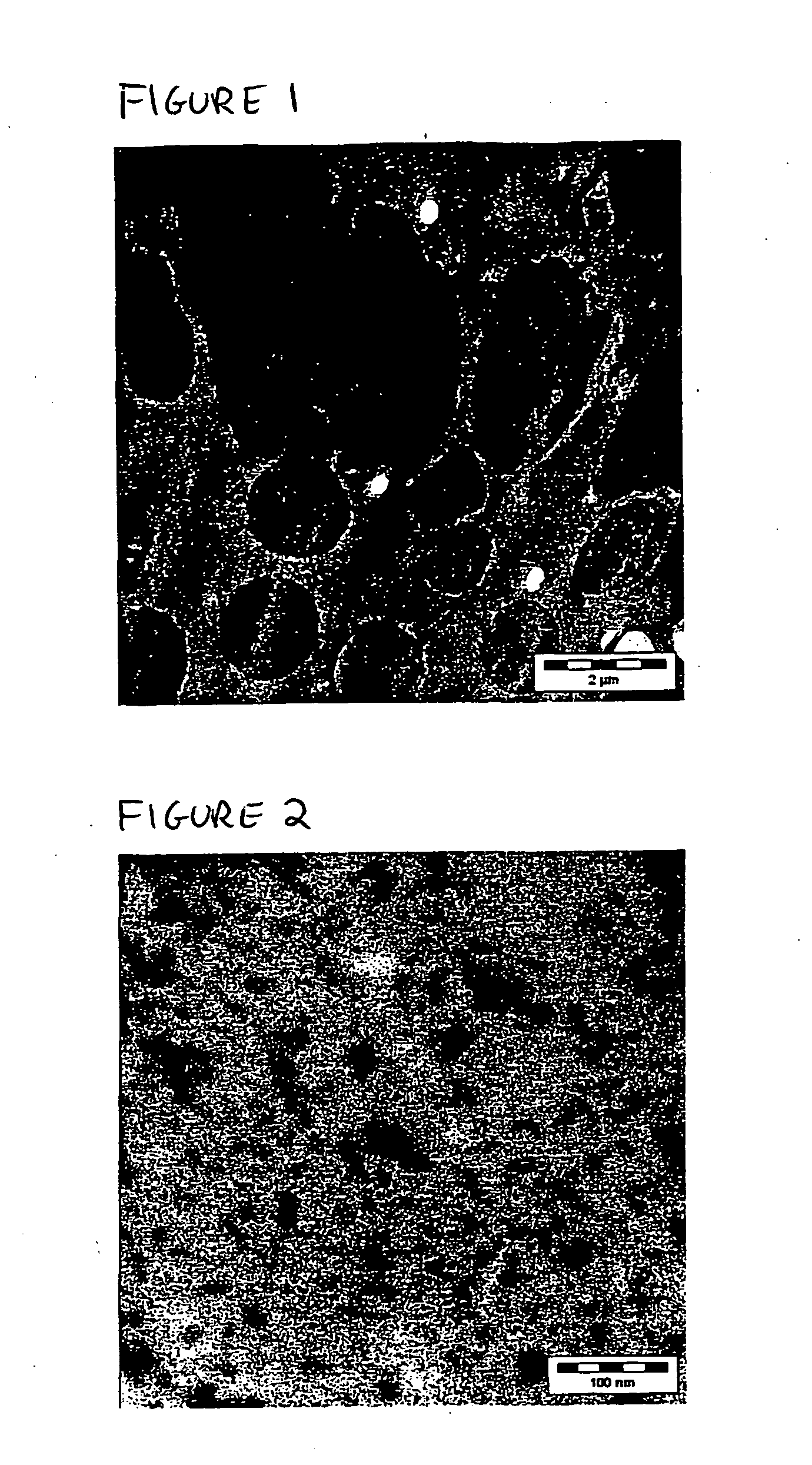Multi-phase structural adhesives
a structural adhesive and multi-phase technology, applied in the field of reactive structural adhesives, can solve the problems of insufficient peel stress performance, loss of bonding without substantial energy absorption, and hardness of conventional high-strength reactive adhesives in the cured state, so as to reduce peel strength and in particular shear strength, improve the morphology of reactive adhesives, and improve the effect of peel strength
- Summary
- Abstract
- Description
- Claims
- Application Information
AI Technical Summary
Benefits of technology
Problems solved by technology
Method used
Image
Examples
embodiment example
Production of Polymer P2
3.1 mol of maleic anhydride was reacted under a nitrogen atmosphere with 1 mol of JEFFAMINE XTJ-509 (trivalent aminno-terminated polypropylene oxide) at 120° C. for 120 min whilst being stirred. The reaction product is reacted with 2.3 times its mass of a liquid DGEBA epoxy resin and 0.25 wt. % triphenyl phosphine for 90 min at 100° C.
Production of Polymer P3
HYCAR CTBN 1300×13 (carboxy-terminated poly(butadiene co-acrylonitrile) was reacted under a nitrogen atmosphere at 140° C. with around a ten-times molar excess of a liquid DGEBA epoxy resin for 3 hours with stirring until reaction constancy. The product containing 40% butyl rubber displays an epoxy equivalent weight of 900 and a viscosity of 200 Pa.s at 80° C.
Production of the Adhesive
165 g P2, 55 g P3, 2 g DGEBA, 17.5 g dicyandiamide, 0.25 g fenuron and optionally 10 g CABOSIL TS 720 silica were mixed at 70° C. until homogeneous and then transferred to storage containers whilst still warm.
Afte...
PUM
| Property | Measurement | Unit |
|---|---|---|
| Temperature | aaaaa | aaaaa |
| Temperature | aaaaa | aaaaa |
| Temperature | aaaaa | aaaaa |
Abstract
Description
Claims
Application Information
 Login to View More
Login to View More - R&D
- Intellectual Property
- Life Sciences
- Materials
- Tech Scout
- Unparalleled Data Quality
- Higher Quality Content
- 60% Fewer Hallucinations
Browse by: Latest US Patents, China's latest patents, Technical Efficacy Thesaurus, Application Domain, Technology Topic, Popular Technical Reports.
© 2025 PatSnap. All rights reserved.Legal|Privacy policy|Modern Slavery Act Transparency Statement|Sitemap|About US| Contact US: help@patsnap.com

